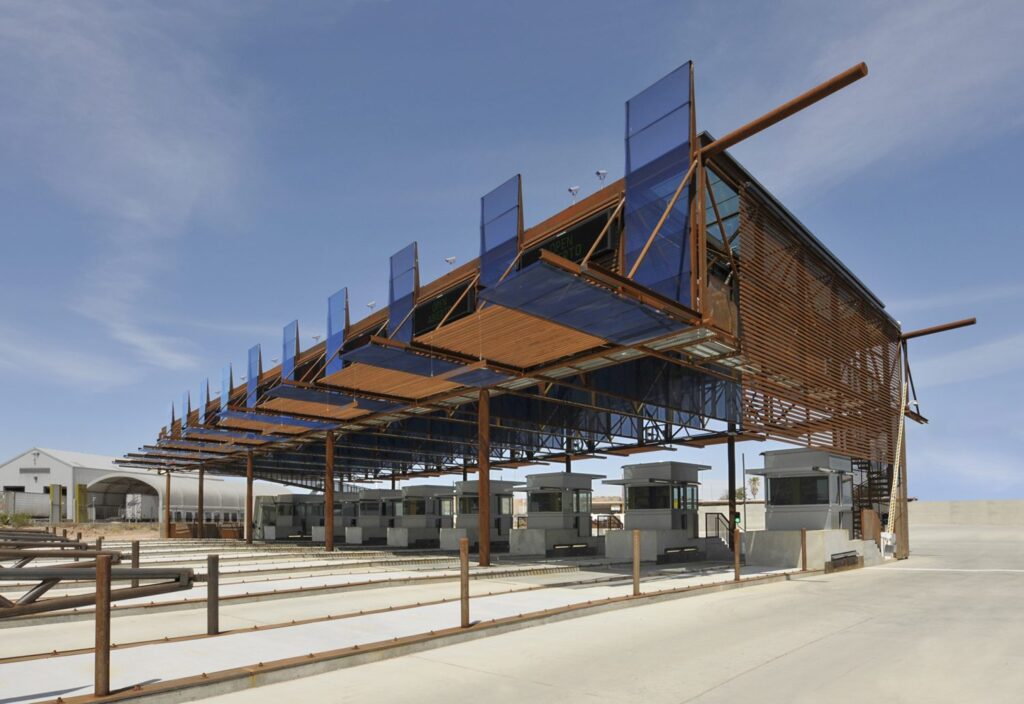Mariposa Land Port of Entry

Nogales, AZ
Client: Hensel Phelps, General Services Administration
Scope of Work: Electrical
About the Project: The Mariposa Land Port of Entry is one of the busiest land ports in the U.S, processing upwards of 2.8 million vehicles every year and is an entry point for 37% of produce imported into the U.S from Mexico. Built in the 1970s over 55 acres, the Port of Entry was modernized in 2014. This renovation grew their commerce from $20-$25 billion in 2011 to $30-$35 billion in 2014. They faced problems with congestion at the port, having to allow pedestrians. RVs, cars, truckers, and buses through. They never closed operations through the remodel through phasing their construction and is now regarded as the model for future ports by Customs & Border Protection. The Port has four zones, a northbound commercial zone, a private northbound vehicle zone, a southbound commercial zone, and an oasis. The oasis is the spine of the Port, a desert garden to protect from the harsh Sonoran weather. The roofs of the port are made to catch rain and keep it in an underground tank to use for the surrounding landscape.
The Principal at Jones Studio, Eddie Jones, approached this project not with traffic barriers or inspection lines, but with a poem by Alberto Rios called “Border lines”. “Let us turn the map until we see clearly / The border is what joins us / Not what separates us.” Taking this into account, the government’s priorities still had to be met as this was one of the busiest land ports. Inside the building, the agents need to always have a clear line of sight and easy access to reach each other, so the internal facility was designed in a way that relieves tension by utilizing physical shading as an individual approaches the passport booths. This technique, used by the Tohono O’odham tribe, slowly decreases light. The only difference is that they would use saguaros, and the builders used steel. Across from Nogales, AZ sits Nogales, Mexico. A Korean artist created 2 art pieces to reference both countries, and a sculpture by an Arizonian artist runs above a walkway to represent the landscape of the area. This $187 million job was awarded LEED Gold as well as a GSA Design Excellence Program Honor Award in Architecture and American Institute of Architects National.
